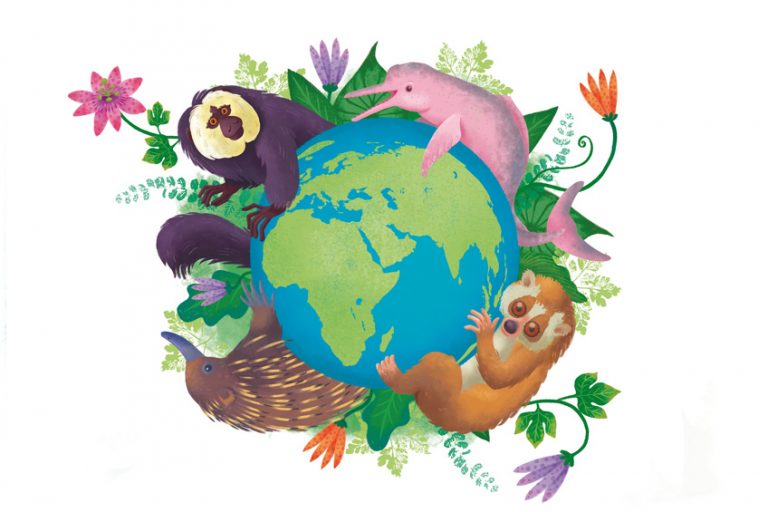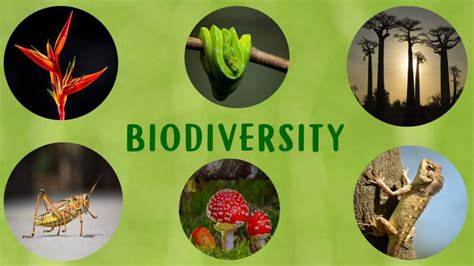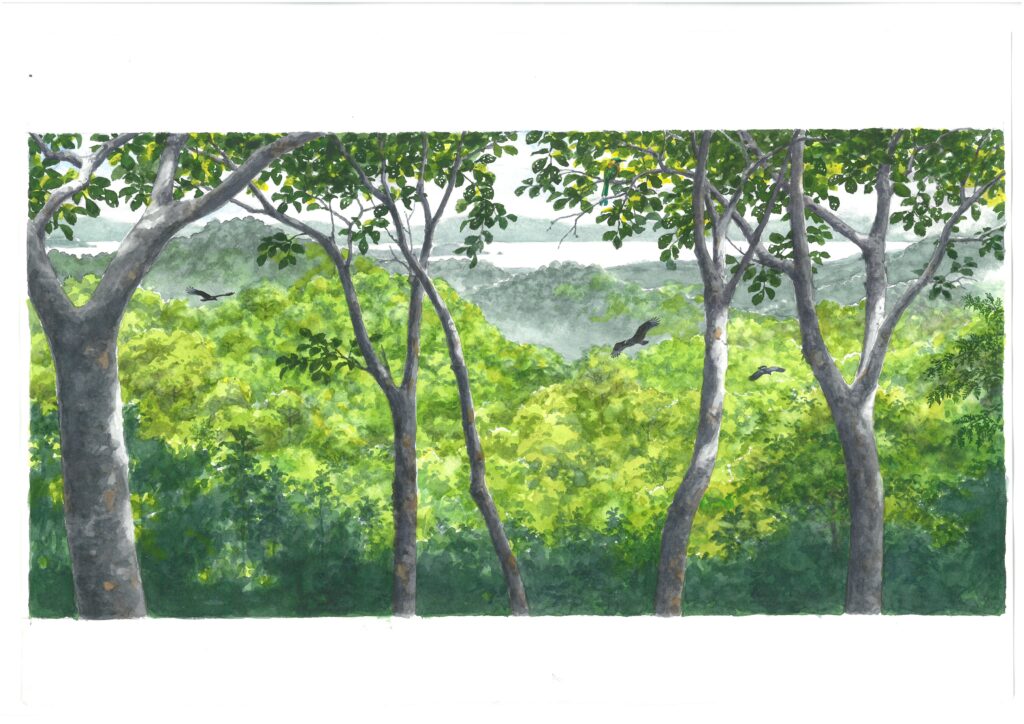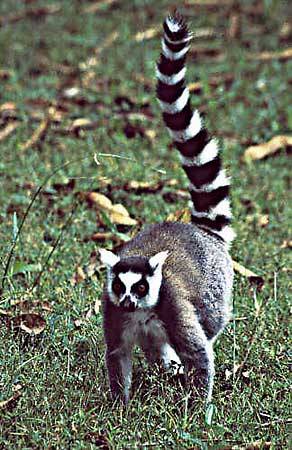
Biodiversity, also known as biological diversity, encompasses the vast array of life forms found on our planet. This includes the genetic variations within individual species, the diverse range of species themselves, and the multitude of ecosystems that exist. Essentially, biodiversity refers to the richness and abundance of all living organisms, as well as the complex ecosystems they inhabit and sustain.
Biodiversity can be divided into three main levels:
Genetic diversity: Refers to the wide range of different genes present within a species. This variety of genetic traits plays a crucial role in enhancing a population’s resilience against diseases, as well as its ability to adapt to changing environmental conditions. A higher level of genetic diversity within a species can significantly improve its chances of survival and thriving in the face of various challenges.
Species diversity: Refers to the entire range of various species that exist within a particular region or throughout the world. This concept encompasses the variety and abundance of different organisms, highlighting the complex and intricate nature of ecosystems.
Ecosystem diversity: This term describes the wide range of different ecosystems or habitats that exist across our planet, including diverse environments like forests, deserts, oceans, and many others. Each of these ecosystems contributes to the planet’s overall biodiversity and plays a critical role in sustaining the natural balance and supporting various life forms.

Biodiversity is not uniformly spread throughout the planet. Certain regions are especially abundant in biodiversity, whereas others exhibit lower levels of diversity. Areas with the highest biodiversity are frequently located in tropical zones, with tropical rainforests being particularly notable.
These regions provide an extensive array of habitats and climatic conditions, which foster the survival and flourishing of a vast assortment of plant and animal species.
Other regions rich in biodiversity include wetlands, coral reefs, and seagrass beds, which are teeming with life. Biodiversity holds significant importance as it offers a multitude of benefits to humans. It provides essential ecosystem services, including food production, crop pollination, disease control, and water purification. Biodiversity plays a vital role in maintaining the beauty and balance of the global ecosystem, enhancing the natural world around us. Consequently, preserving biodiversity is crucial for ensuring the sustainability of our planet and securing the well-being of future generations.

The three major biodiversity hotspots are home to the Foreste per Sempre ODV projects
Costa Rica

Costa Rica is renowned for its remarkable biodiversity, being recognized as one of the world’s most species-rich countries relative to its size. Although it occupies a modest geographical area, Costa Rica boasts a vast array of ecosystems, including lush tropical rainforests, expansive wetlands, towering mountain ranges, and sprawling coastal plains. This rich ecological diversity stems from a combination of factors, such as its strategic geographic position, the existence of various mountain ranges, and the multitude of climates found within its borders.
Here are some characteristics of biodiversity in Costa Rica:
Tropical Rainforests: Costa Rica is renowned for housing some of the few remaining pristine tropical rainforests globally. These lush, vibrant ecosystems are teeming with a vast array of plant and animal life. Within these forests, you can find an incredible diversity of flora, such as spectacular orchids and lush ferns. Additionally, the forests are a sanctuary for numerous wildlife species, including playful monkeys swinging through the treetops, colorful parrots filling the air with their calls, and a variety of snakes and amphibians thriving in the rich biodiversity of this environment.
National Parks and Nature Reserves: The country has made substantial investments in developing national parks and nature reserves to safeguard its rich biodiversity and natural heritage. Notable among these protected areas are Corcovado National Park, known for its diverse ecosystems and wildlife; Tortuguero National Park, famous for its turtle nesting beaches and lush rainforests; and Manuel Antonio National Park, celebrated for its stunning beaches and abundant wildlife.
Unique Species: Costa Rica boasts a remarkable array of endemic species, which means these species are exclusive to this specific region and cannot be found anywhere else in the world. Among these unique species are the Monteverde golden frog and the resplendent quetzal, which holds the honor of being the national bird of the country. In addition to these, Costa Rica is rich with a diverse variety of distinctive flora and fauna, each contributing to the country’s extraordinary biodiversity.
Conservation: Costa Rica is deeply dedicated to the preservation of its rich biodiversity through a range of environmental policies and comprehensive sustainability programs. The nation has accomplished remarkable progress in safeguarding natural habitats, ensuring their protection for future generations. Additionally, Costa Rica actively promotes and supports responsible ecological tourism, encouraging visitors to appreciate and conserve the natural beauty and diversity of its landscapes.
Costa Rica stands as a premier global destination for those passionate about biodiversity, providing an unparalleled setting for exploring, studying, and observing the remarkable variety of wildlife. With its rich ecosystems and vibrant habitats, it offers enthusiasts a unique opportunity to engage with and appreciate the incredible diversity of animal and plant life.
Amazon

The Amazon stands as one of the most biodiverse areas on the planet, distinguished by its abundant assortment of plant, animal, and microbial species. This expansive tropical rainforest stretches across a significant portion of South America, encompassing multiple countries such as Brazil, Peru, Colombia, Venezuela, Ecuador, Bolivia, Guyana, Suriname, and French Guiana. Below are several essential facts about the Amazon’s remarkable biodiversity:
Variety of Species: The Amazon rainforest is estimated to be home to approximately 10% of all known species on the planet. This extraordinary ecosystem supports an incredible array of plant life, animal species, and microscopic organisms. A significant number of these species are endemic to the Amazon, meaning they are not found in any other part of the world. The immense biodiversity present in this region makes the Amazon one of the most biologically diverse areas on Earth, showcasing a vast range of unique life forms and ecological interactions.
Rainforests: The Amazon is largely covered by expansive and vibrant rainforests, which play a crucial role as a habitat for an extensive variety of plant and animal species. These rainforests are composed of several layers of life, from the towering heights of the upper canopy to the rich diversity of the understory plants. Each layer supports distinct ecosystems, contributing significantly to the region’s overall biodiversity, making the Amazon a unique and vital ecological area.
Rivers and Freshwater: The Amazon region is distinguished by its vast and intricate network of rivers, with the Amazon River being the most prominent, renowned as the world’s largest river by water flow volume. This expansive system of waterways provides a diverse array of unique habitats that support an astounding variety of aquatic species. These rivers are fundamental in sustaining the ecological balance and supply essential resources for the countless life forms that flourish in this distinctive and vibrant environment.
Iconic Species: In the vast and diverse ecosystem of the Amazon, several iconic species capture the imagination and wonder of those who learn about this region. Among these fascinating creatures are the majestic jaguar and the elusive puma. The caiman, a formidable reptile, is also a notable resident of these waters. The Amazon is teeming with a variety of primates, including different species of monkeys that swing through the trees with agility and grace. The vibrant and colorful parrots add a splash of brilliance to the dense canopy. Furthermore, this incredible forest shelters a diverse array of reptiles, amphibians, countless insects, and an astonishing variety of bird species, each contributing to the rich tapestry of life that thrives in the Amazon.
Threats to Biodiversity: Despite its essential importance to the global ecosystem, the Amazon faces an array of serious threats that endanger its survival. One of the most pressing issues is the rampant deforestation that is swiftly reducing the forest’s vast cover. This is compounded by intensive agricultural practices that significantly disturb and fragment natural habitats, making it difficult for species to thrive. Furthermore, large-scale mining operations not only change the natural landscape but also have long-lasting impacts on the environment. In addition to these factors, other environmental changes spurred by human activities exacerbate the already precarious situation. Together, these threats pose a severe danger to the region’s incredible biodiversity and its irreplaceable ecosystems, placing them in a state of heightened jeopardy.
The preservation of the Amazon rainforest has emerged as a matter of international significance, given its vital function in stabilizing the global climate and safeguarding the planet’s diverse biological life. The Amazon plays an indispensable role in maintaining ecological balance, which is crucial for the Earth’s health. Consequently, efforts to conserve this unique ecosystem have become increasingly important. Promoting sustainable practices and implementing effective conservation strategies are imperative to protect this exceptional repository of biodiversity for future generations.
Madagascar the red island

Madagascar stands as an extraordinary island, rich in an exceptional array of biodiversity. Its separation from other land masses over countless millennia has given rise to an ecosystem that is unmatched anywhere else on Earth. This unique evolutionary journey has resulted in the development of numerous endemic species that exist solely on this island, making Madagascar a vital sanctuary for wildlife found nowhere else.
Below are some essential points concerning the biodiversity of Madagascar:
Endemism: Madagascar is famous for its exceptional endemism, with a substantial number of species that exist solely on this island. This unique characteristic includes a wide variety of plants, animals, and insects. Over time, these species have evolved in isolation, adapting to the island’s unique environment. Consequently, Madagascar is home to an extraordinary diversity of life forms not found anywhere else on the planet.
Lemurs: Lemurs are among the most iconic and representative species found in Madagascar, belonging to a unique subfamily of primates. These captivating creatures encompass a variety of species, including the well-known ring-tailed lemur, the impressive indri lemur, and various species of the elusive nocturnal lemur. Each of these species is native to Madagascar, making their presence on the island exclusive and highly significant.
Chameleons: The island is renowned for boasting a remarkable diversity of chameleon species. Madagascar serves as a natural habitat to a wide array of chameleons, with many species found exclusively on the island, showcasing its rich biodiversity and unique wildlife.
Birds: Madagascar is truly a haven for those passionate about birdwatching, boasting a remarkable array of bird species found nowhere else in the world, such as the striking Madagascar goshawk and the unique coua. The island presents a diverse array of environments, ranging from lush rainforests to expansive lowlands, each providing the perfect habitat to sustain an impressive diversity of avian life.
Dry Woods and Spiny Forests: Madagascar, apart from its renowned rainforests, also boasts distinctive ecosystems like dry woods and spiny forests. These specialized environments are perfectly adapted to the island’s unique climatic conditions and support a wide variety of endemic plant and animal species. The dry woods and spiny forests are crucial for maintaining biodiversity as they provide habitats for numerous species that are found nowhere else on Earth. These ecosystems are a testament to Madagascar’s incredible natural diversity and are essential for the conservation of its unique wildlife.
Threats to Biodiversity: Regrettably, Madagascar’s rich and distinct biodiversity is under serious threat, mainly due to human activities. These include extensive deforestation, unsustainable hunting practices, and the illegal trade of various species. The heavy human impact has led to severe habitat destruction and drastic declines in the populations of numerous species. Many of these species are endemic to the island, meaning they exist nowhere else and are already in a vulnerable state. This situation poses a critical challenge to conservation efforts aimed at preserving the island’s unique ecological heritage.
Protecting biodiversity in Madagascar is thus a significant challenge. Various conservation efforts, such as establishing national parks and nature reserves, have been undertaken to safeguard critical habitats and conserve the unique species that contribute to making Madagascar a global biological treasure. These efforts aim to ensure the long-term preservation of the island’s rich natural heritage, which is crucial for maintaining ecological balance and supporting the diverse life forms found nowhere else on Earth.



